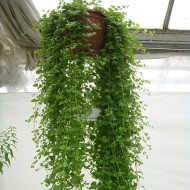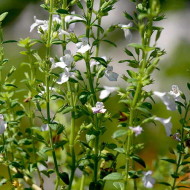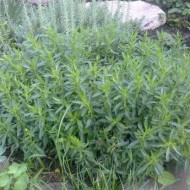Why is garden savory useful and how to grow it in the country
Content
Description and distribution of garden savory
Do not confuse savory and thyme. Although they are related, they are different cultures. Savory is an unremarkable plant with brown thin stems up to 30 cm high. The leaves are short, dark green in color. Flowers appear from July to September in the axils of the leaves. The garden variety of savory is annual, and the mountain variety is perennial. The homeland of the spice is Southern Europe and Central Asia.
Another name for savory is saturea, or kondari. This spice is popularly called pepper herb. Moldovans call him Chimbru, Bulgarians - Chubritsa, Armenians - Citron, and Uzbeks - Dzhambul.
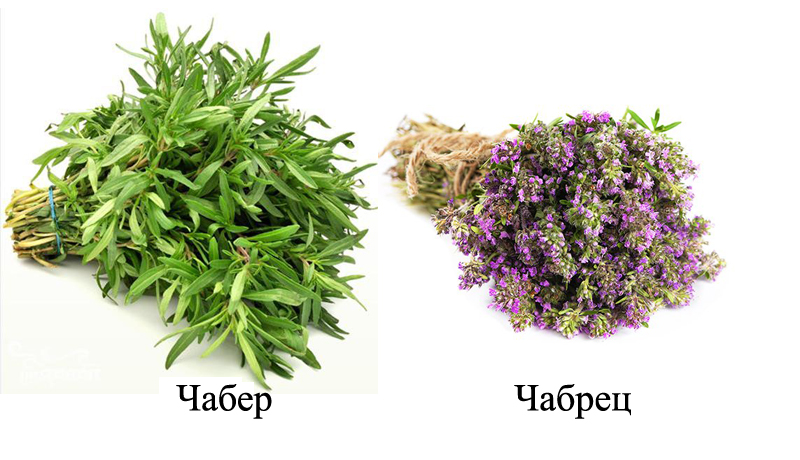
Chemical composition
Energy value of 100 g of raw materials - 272 kcal. The herb contains 2% essential oil, vitamins (B3, A, B6, C), a wide range of trace elements, tannins, mineral salts. In the composition of 100 g of grass, such a ratio of BZHU:
- proteins 673 g;
- fats - 5, 91 g;
- carbohydrates - 23, 03 g.
Useful and medicinal properties
Due to its rich composition, savory is used in folk medicine and cosmetology. It has the following action:
- increases potency;
- normalizes the functioning of the genitourinary system;
- helps to fight vesiculitis, prostatitis, epidermitis, urethritis;
- normalizes the digestive tract with bloating and diarrhea;
- stimulates the production of gastric juice;
- helps in the fight against parasites;
- by increasing the level of fatty acids in the body, it reduces the likelihood of developing cancer;
- heals and prevents the occurrence of gynecological diseases;
- tones the body, stimulates the brain.
Savory is used as an expectorant, diuretic and antibacterial agent. For cosmetic purposes, essential oil and a decoction of the plant are used. This is a good solution to combat alopecia and strengthen hair follicles.

Harm and contraindications for use
It is recommended to refuse this spice for pregnant women. Also, the use of pepper herbs in any form is prohibited for the following pathologies:
- peptic ulcer;
- atrial fibrillation;
- cardiosclerosis;
- disruption of the thyroid gland;
- allergy.
Common species and varieties
For the preparation of culinary dishes, medicines and cosmetics, the following types of plants are used:
- Mountain. Perennial shrub up to 50 cm high with white flowers. Due to the large amount of essential oils in young stems, it is used with caution in cooking so as not to overdo it. The culture is also used in perfumery and soap making.
- Citric. The perennial species is distinguished by creeping shoots with pink flowers. The scent has hints of lemon and oregano.
- Cretan.A short bush with tough stems. The flowers are grayish-white in color, and the scent is similar to that of lemon and thyme.
- Douglas. This perennial species reaches 10 meters in height and 1.5 meters in width due to creeping, but rigid branches. The flowers are lilac-white, the smell has hints of lemon and mint.
- Rod-shaped. Due to the bright leaves of a rich green color, it is often used to decorate garden plots. Smells like mint during flowering.
- Rod-shaped
- Douglas
- Cretan
- Citric
- Mountain
Among the varieties of savory, the following are distinguished:
- Fragrant. The plant blooms 45–48 days after germination.
- Breeze. Mid-season variety with blue-violet flowers and dense leaves.
- Gribovsky 23. Thick, dark green leaves have a bluish tint. The height of this savory does not exceed 40 cm.
- Satyr. An early variety that retains its flavor well when dried.
- Sprint. Refers to early ripening varieties. Has light purple flowers, contains a lot of thymol.
- Filevsky Semko. In this mid-ripening variety, the stems are lignified from the root, due to which they do not bend.
- Charlie. The branches are densely covered with leaves, but the plant branches poorly. The yield reaches 1, 7 kg from 1 m².
Video "Cultivation of garden savory"
This video explains how to plant and care for a plant.
How to properly grow garden savory
Sowing seeds
For pepper grass, mountainous stony soil, loam, sandy loam, loose drained soil are suitable. Fertile soil with neutral acidity will provide greater strength and size of the bush, enhancing the aroma.
The more fertile the soil, the more intense the aroma of the plant.
Savory needs an open, sunny place, the shade is not suitable for him. Its growth is negatively affected by the presence of weeds, the roots of which can take up a lot of space underground. Before planting, the land must be cleared of weeds, loosened.
Due to the fact that the seeds are small, they are mixed with sand before planting. To sprout faster, seeds are soaked in warm water 18 hours before sowing. This is necessary due to the presence of essential oils in the plant. The sowing depth is 0.5 cm, the distance between the rows is up to 25 cm. It is better to lightly sleep the seeds introduced into the ground with light humus, and cover with a film stretched over arcs. Savory grows well on balconies and indoors in flower pots.
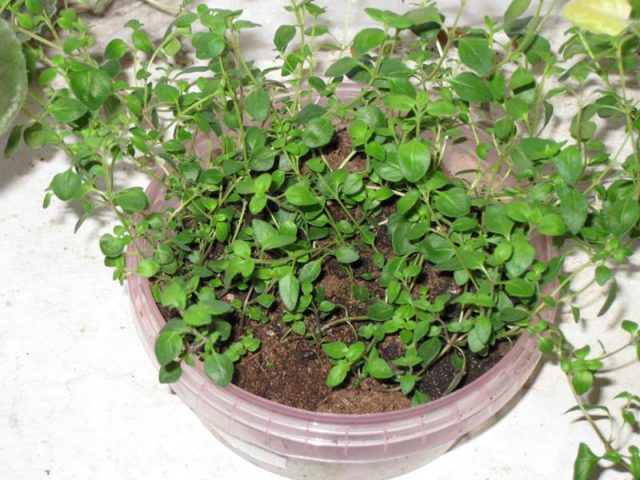
How to care for your culture
To get a good harvest, the savory needs to be thinned twice. The first time the procedure is carried out when there are 3-4 leaves on the seedlings, keeping a distance of 7-8 cm. The second time, the distance is increased to 15-20 cm.
It is important to weed the weed bed. Young savory should be fed with ammonium nitrate at the rate of 1 tsp. for 10 liters of water, which is distributed over 1 m². The fertilizer is applied in the space between the rows, not on the stalks of the grass. In dry weather, the plant is watered twice a week.
Diseases and pests
Due to the intense aroma of savory, insects do not affect it. The main diseases of the spice are rot and mealy growth, which is manifested by white spots on the leaves. The cause of the disease lies in excessive moisture and stagnation of moisture in the roots. To prevent the problem, you need to adjust the watering depending on the weather. At the first signs of powdery mildew, the plant should be treated with a solution of Actellik.
Collection and procurement of raw materials
You need to cut the savory for drying before it blooms, so that bitterness does not appear in the leaves. It is most useful during this time. Harvesting is carried out in warm, dry weather. Cut off no more than 1/5 of the stems from the bush to prevent stress. From the collected branches, bunches are formed, and they are hung to dry in dark, dry rooms with good ventilation.
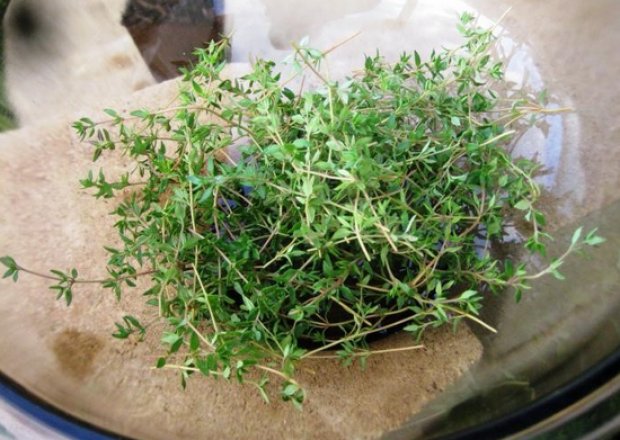
Scopes of garden savory
In folk medicine
Savory is valued for its antiseptic, stimulating internal body processes, restorative effect. It is used for various diseases, but you should consult your doctor before taking it. Use cases and recipes:
- Strengthening the immune system. Pour 1 tbsp. boiling water 2 tsp. savory, leave for 10 minutes. and strain. Drink warm.
- From an insect bite. Rub freshly chopped leaves into the bite.
- Angina, pharyngitis, scurvy. Use a decoction of the herb for rinsing.
In cosmetology
Essential oil and savory infusion strengthens hair, stimulates its growth. Pepper herb treats baldness, fight wrinkles. With the help of recipes based on this culture, dermatitis and eczema are eliminated.
In cooking
Using savory in cooking, you need to strictly adhere to the recipe, because this spice is an aphrodisiac. used dried or fresh. In ancient times, this spice was used as a substitute for black pepper. Its most common use is for the preparation of meat and fish dishes. In addition, savory is added to fried potatoes, salads, sauces, mushrooms, pickles for pickling vegetables, dough for salted cookies.

In agriculture
Savory protects legumes from pests and helps preserve crops. Substances extracted from the aerial part of the herb can be used as a means to combat blackleg, which damages lettuce and tomatoes.
Savory is used to beautify the personal plot, to form alpine hills. It is appreciated for its bright aroma, interesting taste and medicinal properties. Pepper herb is part of the Provencal Herbs mixture. It is used to prepare various dishes, especially meat ones. Savory has proven itself well as a medicinal plant, but before starting therapy, you need to consult with your doctor.


